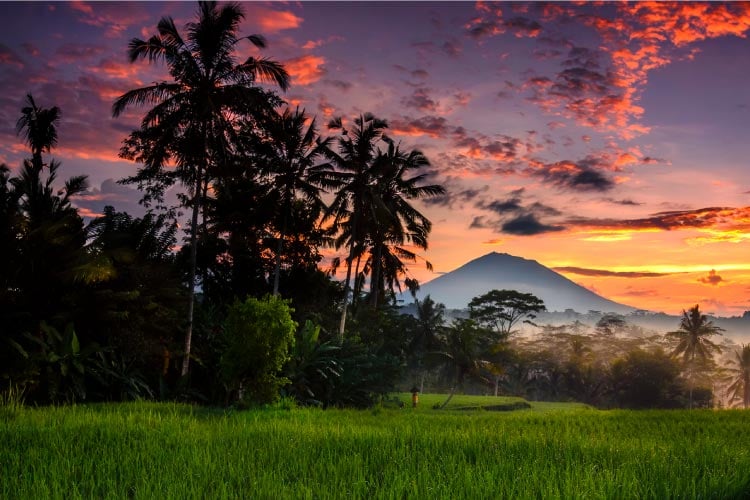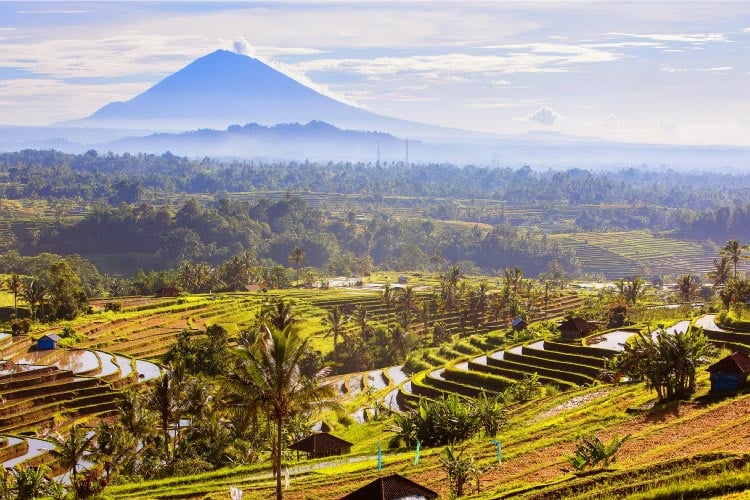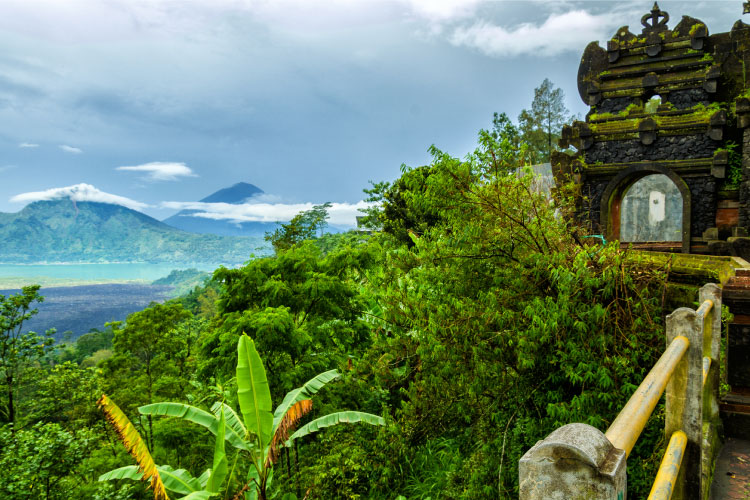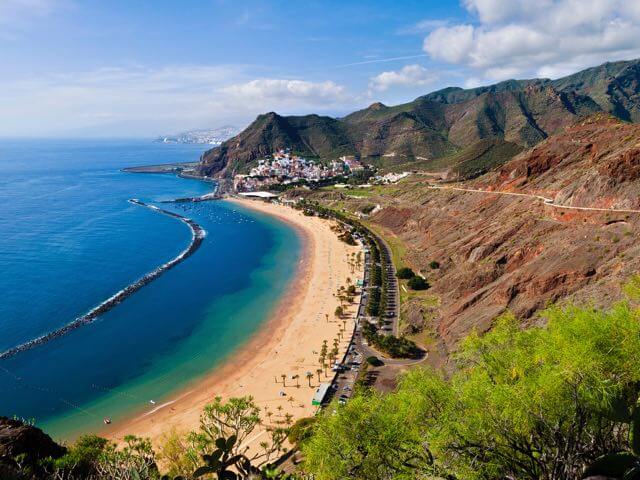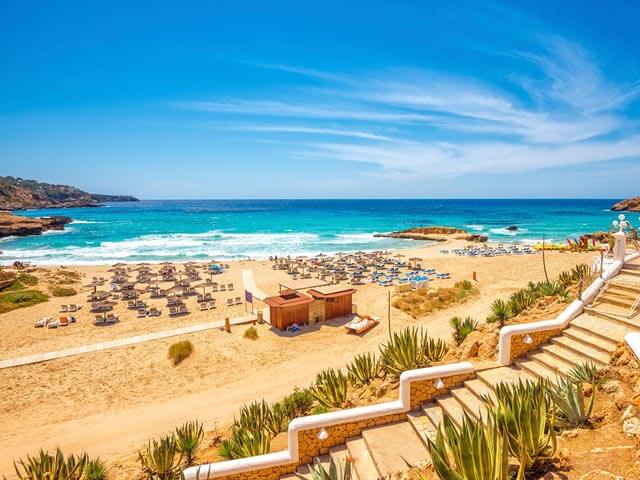Best time to visit Bali
When deciding upon the best time to travel to Bali for your holiday, it comes predominantly down to one simple question: to go in the wet season or the dry season? Now, the answer to this may seem like a no-brainer, but it's worth considering the benefits of a wet season trip before dismissing the idea altogether.
The wet season in Bali comes with the added bonus of fewer fellow visitors, which offers a variety of benefits. Accommodation will be cheaper and you'll have those paradise beaches almost entirely to yourself. If a bit of unpredictable weather seems like a small price to pay for a deserted patch of sand, then the wet season may just be for you.
Reasons spring is the best time to go to Bali
While July and August are the peak seasons for travelling to Bali, it's worth considering going earlier or later in the year. April to June is a particularly good time to visit the island, as it is just emerging from the wet season and remains relatively quiet. If you're not convinced, here are three reasons to go in the spring.
1. Spring weather in Bali is hot, but humidity is low.
Spring temperatures on the island tend to be high, but humidity is low. Having just experienced the Bali rainy season, the landscape looks lush and nourished, but rainfall is significantly less than in the winter months. Bali´s weather in April and May makes it perfect for sun worshippers and enjoying the beaches that Bali has become famous for.
The sea surrounding Bali is crystal clear at this time of the year, meaning it is an especially rewarding time to enjoy diving, watersports and boat tours. Getting a last-minute spot with experienced guides will also be more manageable, as the atmosphere is much more relaxed than during the high season.
2. Bali in spring is less crowded than in the summer months
In the months of April, May and June, Bali welcomes fewer tourists; offering you the opportunity to see the island for what it is. There will be less competition to get that elusive people-free Instagram shot and you'll be able to enjoy its natural beauty without getting lost in a crowd.
3. Bali in the spring offers less competition for restaurants and accommodation
Due to the lower number of visitors at this time of year there are more bargains to be had. Everything from flights to accommodation and even meals are cheaper in Bali in the spring as businesses compete for custom. If you're looking to do your Bali break on a budget then this is definitely a consideration.
With restaurants being less busy it's easier to get a recommendation about the best local dishes to try and receive one-on-one service. Sign up for cookery classes that are not oversubscribed in spring and learn much more about the local cuisine.
Reasons to visit Bali in the rainy season
Bali weather in December to February sees the island at its rainiest, but do not be put off, as there are a number of reasons why you might choose the wet season to visit this South East Asian gem. While there are many benefits to holidaying in Bali during the rainy season, it's important to be aware of the added risks of flooding, safety when swimming and low visibility.
1. Bali's rainy season shows off a unique microclimate
Being in Bali during a tropical downpour is an experience in itself. Forget the drizzle that is sometimes seen in the UK and find yourself caught in an onslaught of rain whilst it's still hot outside. The conditions will be different every day and each town, beach and area of the mountains will have its own weather system. It's phenomenal to see, but of course, it won't be raining the whole time, so there will also be the chance to see Bali at its most beautiful and luscious.
2. Bali's wet season is cheaper and quieter
There's a reason why the rainy season is known as the off season and that's because very few tourists decide to travel to the island between December and February. While springtime is quiet, the winter months take it to a whole different level. You'll feel like you have the whole place to yourself and will spend significantly less money. If you visit at this time of year you'll be spoilt by the deserted beaches and will never want to return to Bali when it's busy.
3. Bali's jungle flourishes in the wet season
Every shade of green is represented in Bali during the wet season. From the vast expanses of rainforest to the terraced paddy fields, your eyes will have to adjust to the incredible varieties of emerald, lime and pistachio on display. Bali's waterfalls are full and spectacular during the wet season, while the native birdlife stands out in all its tropical colours. Even the island's architecture looks more impressive during the wet season, as the ancient stone temples are contrasted with the vibrant green leaves of the surrounding forest.
Yearly weather in Bali
| Month |  High / Low ºC
High / Low ºC
|  Rainfall cm Rainfall cm |  Rain Days
Rain Days |
|---|---|---|---|
| January | 33 / 24,1 | 34,5 | 27 |
| February | 33,4 / 24,2 | 27,4 | 22 |
| March | 33,6 / 24 | 23,4 | 20 |
| April | 34,4 / 24,8 | 8,8 | 9 |
| May | 33,1 / 24,1 | 9,3 | 8 |
| Jun | 31,4 / 23,5 | 5,3 | 6 |
| July | 30,4 / 23 | 6 | 4 |
| August | 29,6 / 22.5 | 3 | 4 |
| September | 31,4 / 22,9 | 5 | 8 |
| October | 33,6 / 23,7 | 6,3 | 12 |
| November | 32,7 / 23,5 | 17,9 | 16 |
| December | 33,23 / 23,5 | 27,6 | 22 |
Are you ready for your Bali dream vacation?





